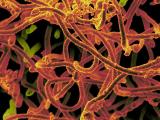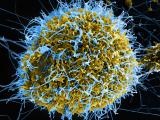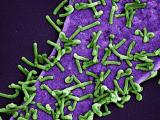Oct 13, 2010 (CIDRAP News) – Colombia is seeing twice the usual number of dengue cases this year, and Asian Pacific countries are also experiencing a rise in the mosquito-borne illness, according to health officials.
In Colombia, high temperatures from an unusually strong El Nino weather pattern, combined with heavy rains, helped double the number of dengue infection cases this year, ReliefWeb reported yesterday.
About 120,000 cases have been reported so far, 115 of them fatal.
The warmer weather has contributed to the emergence of certain dengue strains that Colombia has not detected since 1998, according to the report from ReliefWeb, an information portal hosted by the United Nations Office for the Coordination of Humanitarian Affairs. The hotter conditions have also raised dengue activity in other South American, Central American, and Caribbean countries.
Health officials said Colombia's dengue outbreak has revealed vulnerabilities in the country's health and environment systems. About two thirds of Colombia's cities report conditions that contribute to dengue epidemics, such as poor sanitation, improper garbage and tire disposal, inadequate rain water drainage, and risky water storage practices.
Meanwhile, Asia-Pacific countries have also seen a rise in dengue infections, and at a regional World Health Organization (WHO) conference today, Malaysia's health minister, Liow Tiong Lai, urged the WHO to push countries to adopt a more comprehensive approach to handling the dengue threat, Agence France-Presse (AFP) reported.
He said Malaysia has recorded a 53% increase in dengue cases this year, including 117 deaths among the 38,000 cases.
The WHO's regional director, Shin Young-soo, acknowledged dengue cases have doubled in the region over the past decade. He said that, although the WHO is working with member countries, individuals also need take measures in their own homes and communities to reduce the risk.
In other dengue developments, researchers from the National Institutes of Health (NIH) have identified a key step in how the virus infects cells. The findings appeared Oct 7 in Public Library of Science (PLoS) Pathogens.
The investigators determined how the dengue virus releases itself from the protective membrane that is present as it penetrates deep within the cell. During the cell infection process, the virus binds to the cell membrane, which engulfs the virus in an endosome. The virus must then release itself from the endosome before it releases its genetic material into the cell's cytosol.
In a press release, the NIH said discovery will allow researchers to study the invasion process in the lab and test treatment candidates.
See also:
Oct 12 ReliefWeb report
Oct 7 PLoS Pathog study
Oct 12 NIH press release



















